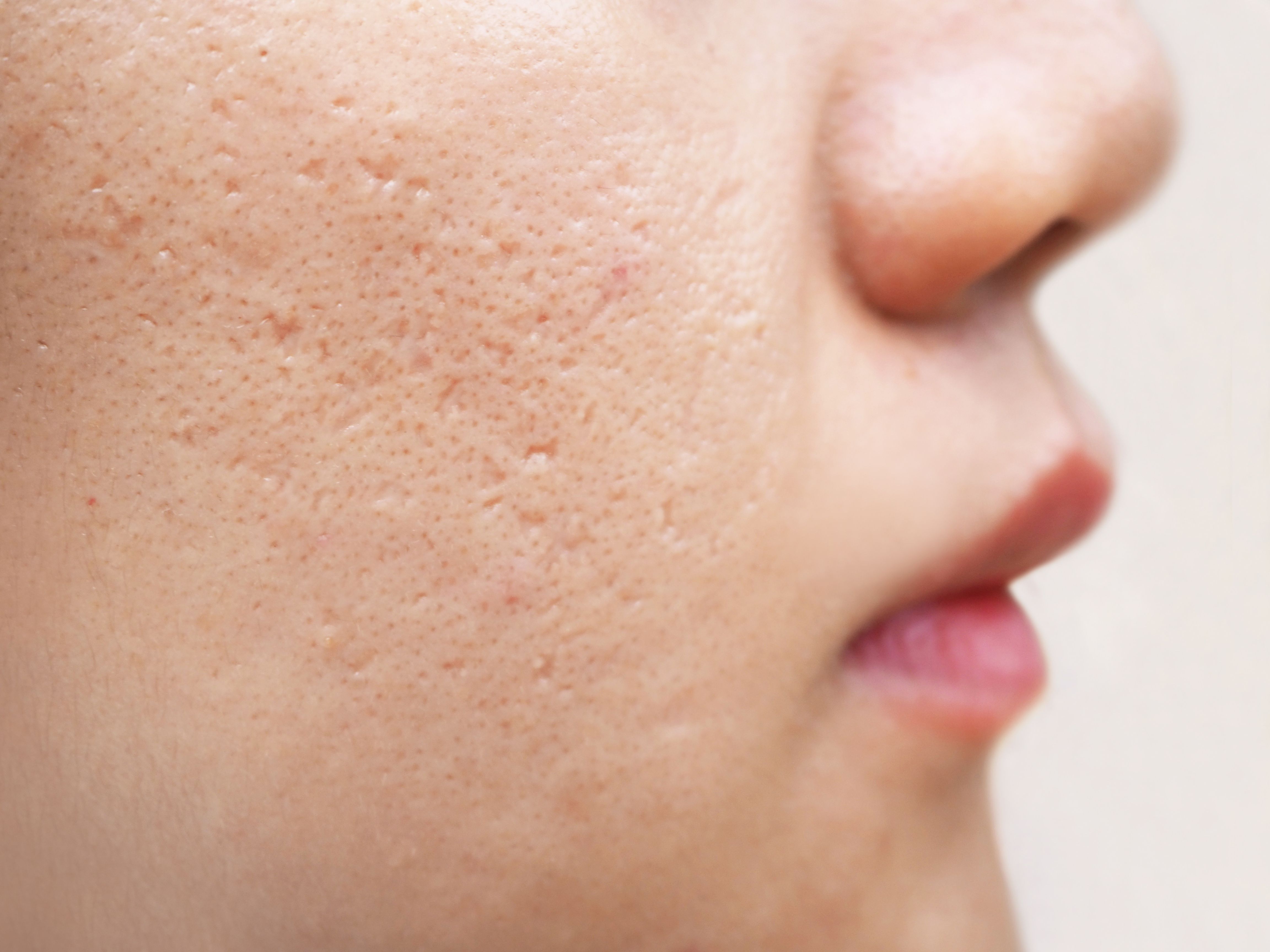- Acne
- Actinic Keratosis
- Aesthetics
- Alopecia
- Atopic Dermatitis
- Buy-and-Bill
- COVID-19
- Case-Based Roundtable
- Chronic Hand Eczema
- Chronic Spontaneous Urticaria
- Drug Watch
- Eczema
- General Dermatology
- Hidradenitis Suppurativa
- Melasma
- NP and PA
- Pediatric Dermatology
- Pigmentary Disorders
- Practice Management
- Precision Medicine and Biologics
- Prurigo Nodularis
- Psoriasis
- Psoriatic Arthritis
- Rare Disease
- Rosacea
- Skin Cancer
- Vitiligo
- Wound Care
News
Article
Dermatology Times
Understanding and Treating Pseudo Acne Fulminans
Shanna Miranti, MMS, PA-C, reviews 2 patient cases of pseudo acne fulminans, offering perspectives on treatment and management strategies.
Pseudo acne fulminans is a rare but significant dermatological condition that can arise during isotretinoin (Accutane) treatment, particularly in patients with severe inflammatory acne.1 Shanna Miranti, MPAS, PA-C, advanced practitioner at Riverchase Dermatology in Naples, Florida, and Dermatology Times summer editor in chief, recently presented 2 cases that shed light on this condition, its management, and the importance of careful monitoring and patient counseling during isotretinoin treatment.
Figure 1. A 17-year-old patient at baseline. Isotretinoin was initiated at 40 mg daily.

Rare Condition Deep Dive
Pseudo acne fulminans is characterized by a sudden eruption of nodules and ulcerative, crusted acne lesions. It is considered a rare condition because there have been fewer than 200 case reports documented, but its incidence appears to be increasing with the rising use of isotretinoin. The condition typically occurs in teenaged boys and men, particularly those with severe inflammatory acne including truncal involvement. This often starts within the first month of isotretinoin treatment or after clinicians increase the patient’s dosage to 1 mg/kg daily. Notably, patients do not exhibit systemic adverse effects such as fever, arthralgias, myalgias, bone pain, and painful splenomegaly— differentiating psuedo acne fulminans from traditional acne fulminans. Patients need to be advised that scarring is often a guaranteed outcome even with proper pseudo acne fulminans management due to the extreme inflammation that occurs with this condition.2
Figure 2. Follow-up after 1 month. Diagnosed as pseudo acne fulminans. Isotretinoin dose decreased to 20 mgdaily and prednisone initiated at a 40/20/10/5 mg taper.

Case 1
The first case Miranti reviewed was a 17-year-old adolescent who presented with a several year history of severe inflammatory scarring acne conglobata on his face, neck, and trunk (Figure 1). He was previously treated in another country and was currently using a topical OTC acne medication from his country that contained betamethasone. After reviewing his treatment options he was advised to discontinue the betamethasone containing topical and he was initially started on isotretinoin at a dose of 40 mg daily.
Figure 3. 3 months S/P pseudo acne fulminans diagnosis. Prescribed 2 rounds of prednisone and slowly increased the dosage of isotretinoin to 20 mg BID at 8 weeks then to 30 mg QAM/20 mg QPM at 12 weeks, then 30mg BID at 16 weeks (which was 1 mg/kg/day) The patient finally cleared and was discontinued after 6 months. He had prominent thick scarring, especially on his neck, which required intralesional Kenalog.

At his 4-week follow-up, he presented with severely inflamed and crusted nodules, and he was diagnosed with pseudo acne fulminans (Figure 2). Due to the extreme inflammatory response of the pseudo acne fulminans, Miranti started a prednisone 60/40/20/10/5 mg taper over the next 4 weeks and decreased the isotretinoin to 0.25 mg/kg/day. Miranti had to assume there could be a bacterial infection present, so she also recommended vinegar and water soaks daily to help remove the significant secondary crusting. She advised to addHibiclens to his daily face wash, and prescribed mupirocin ointment to be applied twice daily. At his 2-month follow-up, Miranti was able to slowly increase the isotretinoin dosage to 0.5 mg/kg, and then increased again the following month (Figure 3).
Case 2
Miranti’s second case was notable because of the relatively late onset of pseudo acne fulminans. This case involved a 15-year-old adolescent with recalcitrant acne on his face, neck, and torso who had a family history of cystic acne and had previously experienced failed treatments with oral antibiotics and topical retinoids. The patient’s mother expressed concern about existing scarring and her son’s declining self-esteem, as he had not taken his shirt off to swim in years.
The patient and his mother wanted information on isotretinoin as an option for treatment because the patient’s father had taken isotretinoin in his teenaged years. During the physical exam, Miranti found a few inflammatory acne cysts on the face and some scattered shallow erythematous acne scars on the face and neck, plus nodulocystic lesions and thousands of comedones on his posterior shoulders, back, and chest,and shallow erythematous acne scars on the neck (Figure 4). The treatment plan for this patient included starting isotretinoin at a dose of 40 mg daily, which was approximately 0.5 mg/kg of his body weight. At the patient’s 4-week follow-up, he was experiencing normal dryness but no additional adverse effects, so the isotretinoin dose was increased to 1 mg/kg/day. However, the patient’s 12-week visit came with a surprise—the emergence of pseudo acne fulminans requiring a strategic approach to management (Figure 5).
Figure 4. 15-year-old patient with recalcitrant acne at first visit.

Management Strategies for Both Cases
Miranti emphasized the importance of not discontinuing isotretinoin in cases of pseudo acne fulminans. An influential sentiment Miranti heard from Hilary Baldwin, MD, medical director at the Acne Treatment and Research center in Brooklyn, New York, was: “Parodoxically the medicine that caused this ‘side effect’ is the exact medicine that they need.” In these cases, Miranti recommended a decrease in dosage to 0.25 to 0.5 mg/kg daily followed by a slow increase back to the original dose. Additionally, in most pseudo acne fulminans cases, a prednisone taper (40/20/10/5 mg over 2 weeks) may be necessary to manage inflammation. In some cases, multiple tapers or higher doses may be required. She also recommends to always assume that there is a secondary bacterial infection that needs to be treated accordingly and to take cultures if needed.
Figure 5. Pseudo acne fulminans appeared at the patient’s
12-week visit.

Prevention Is Possible
To prevent the onset of pseudo acne fulminans, the first step is identifying isotretinoin candidates who may be at risk—typically male individuals in their late teens or early 20s with severe inflammatory or cystic acne on their face and also with significant truncal involvement. Miranti suggested starting patients at high risk on a low dose of isotretinoin (10 to 30 mg/day) combined with prednisone, if warranted, and slowly increasing to 1 mg/kg/day dosing. These patients should be advised that slow-onset tapers will take much longer to complete the full course of isotretinoin therapy.
Post-Treatment Considerations
Post-treatment is crucial to prepare patients for potential scarring. Miranti recommended starting a topical retinoid immediately after completing the isotretinoin course to aid in scar management. Treatments such as intralesional triamcinolone (Kenalog) for keloided or hypertrophic areas as well as advanced options such as lasers and microneedling can be beneficial. New literature suggests that these interventions can begin as early as 1 to 3 months after isotretinoin treatment.3
Conclusion
The cases presented by Miranti highlight the complexities of managing pseudo acne fulminans in patients undergoing isotretinoin therapy. With careful monitoring, appropriate dosage adjustments, and proactive scar management strategies, dermatology clinicians can effectively navigate this challenging condition. As the use of isotretinoin continues to rise, understanding the nuances of pseudo acne fulminans and recognizing it early will be essential for optimizing patient outcomes.
References
- Grando LR, Leite OG, Cestari TF. Pseudo-acne fulminans associated with oral isotretinoin. An Bras Dermatol. 2014;89(4):657-659. doi:10.1590/abd1806-4841.20143024
- Fakih A, Goens J, Grozdev I, Dangoisse C, Richert B. Acne fulminans induced by a low dose isotretinoin: case report and review of the literature. Dermatol Online J. 2020;26(12):13030/qt14h2419w.
- Hatami P, Balighi K, Asl HN, Goodarzi A, Aryanian Z. Isotretinoin and timing of procedural interventions: clinical implications and practical points. J Cosmet Dermatol. 2023;22(8):2146-2149. doi:10.1111/jocd.15874
All figure images courtesy of Shanna Miranti, MPAS, PA-C

Newsletter
Like what you’re reading? Subscribe to Dermatology Times for weekly updates on therapies, innovations, and real-world practice tips.























